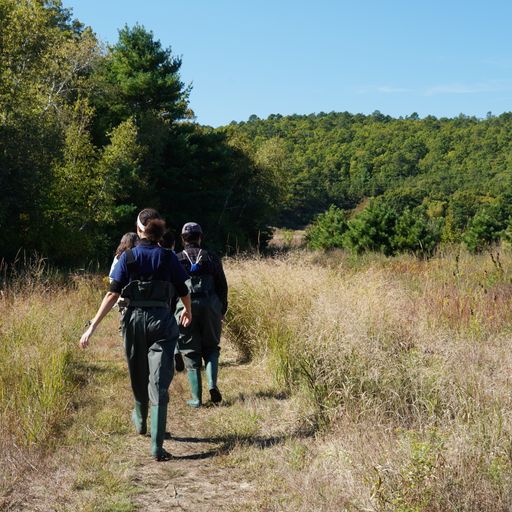Soundscapes to Monitor Habitat Development on Restored Cranberry Farmland
Acoustics have been gaining increasing attention in wildlife conservation as a reliable and low-cost approach to monitoring vocalizing biodiversity over extended periods (Sueur et al., 2008; Tucker et al., 2014). Pijanowski et al. (2011) defined the discipline of Soundscape Ecology as the study of the relationship between acoustics and the environment, characterizing soundscapes as the collection of biological, geophysical, and human sounds within a landscape (Buxton et al., 2018; Pijanowski et al., 2011). Biodiversity measures can be extracted from acoustic recordings in two ways. The traditional approach is to identify each vocalizing species present in the recordings, which requires experts in vocalization identification to label species calls. Algorithms are improving for automatically detecting vocalizing bat species (e.g., Kaleidoscope Pro) and birds (e.g., Song Sleuth, BirdNet). However, the automatic detection of birds, insects, and anuran species is not yet reliable without the supervised calibration by experts, due to vocalization variability, sound overlap (Gibb et al., 2019; Zhang et al., 2016); and the presence of unwanted sounds can mask species signatures noise (Darras et al., 2016). An alternative approach is to evaluate the acoustic community diversity. Acoustic community diversity is the aggregation of all species that produce sounds at a particular location and time (Farina & James, 2016; Sueur et al., 2014). Each community has a distinctive acoustic signature that depends on the species' composition (Farina & Pieretti, 2014). Acoustic indices allow aggregating acoustic signals to represent the overall acoustic community diversity of the landscape (Sueur et al., 2014). Based on the acoustic niche partitioning hypothesis (Krause, 2012; Krause, 1993), which states that species singing at the same time vocalize at different frequencies to avoid masking effects, acoustic indices assume that as more species are found in a community, a greater number of acoustic signals at different frequencies will happen at the same time (Sueur et al., 2008). The aggregation of all these signatures will result in a specific community signature that is associated with habitat health (Tucker et al., 2014; Sangermano, 2022).
Soundscapes have been used to monitor habitat degradation due to human pressure, such as timber extraction (Burivalova et al., 2021; Rappaport et al., 2022), mining (Campos-Cerqueira et al., 2020), and fires (Rappaport et al. 2022; Duarte et al. 2021). Assessment of restoration success requires continuous monitoring and comparison with reference sites, and soundscapes have been proven useful for this task in both terrestrial and aquatic ecosystems (Broker et al., 2019; Lamont et al., 2021, Choksi et al., 2023).
This project uses soundscapes to track habitat development after the restoration of Cranberry farmlands. Habitat degradation is known to reduce the acoustic niches occupied by vocal biodiversity (Campos-Cerqueira et al., 2020) or change its composition (Rappaport et al., 2022). A successful wetland restoration is expected to increase habitat quality for biodiversity and be reflected in an increase and change in the composition of species vocalizations, which will be reflected in the soundscape.
Objectives:
This project will investigate relationships between remote sensing metrics of wetland condition (vegetation greenness, vegetation moisture, standing water) and soundscape use. Soundscapes will be compared across Cranberry farmlands with different numbers of years under restoration (and ideally including nearby active cranberry bogs and nearby natural wetlands). The sites will be sampled yearly to assess variations in soundscape activity and use.
Image credits: Living Observatory


